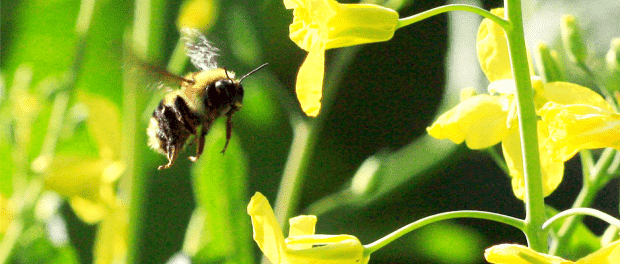http://app.getresponse.com/click.html?x=a62b&lc=8P0o9&mc=IC&s=RzieYd&u=Yy3s&y=S&
Rare bumblebee makes comeback
By Dana Kobilinsky
 Bombus occidentalis, also known as the western bumblebee, is making a return in the Pacific Northwest. ©naturalflow
Bombus occidentalis, also known as the western bumblebee, is making a return in the Pacific Northwest. ©naturalflow
Populations of the bumblebee species Bombus occidentalis have been taken on a rollercoaster ride of declining and re-emerging, but the bees now appears to be on the ascending part of the ride, according to recent research.
The species had once been the most common bumblebees in the Pacific Northwest, but faced major declines in the mid-1990s to the point where it was one of the rarest.
“The population seems at least to be re-emerging where it hadn’t been seen in the last 10 years,” said James Strange, a researcher at the USDA’s Pollinating Insects Research Unit at Utah State University, in a release. “There is some resilience in the population of Bombus occidentalis. They do seem to be coming back.” Strange is one of the authors of a newly published study in the Journal of Insect Science.
Researchers have suggested that the Nosema parasite might have played a role in the bees’ decline. However, studying the parasite isn’t an easy feat.
“When we try to raise the bees in captivity, they die, so we can’t do a lot of experimental work to show that this [parasite] is really the thing [killing bees],” Strange said. “We have a lot of correlation, but we can never get the species without the pathogen. We can’t clean this pathogen out.”
The researchers are looking for reasons why the bees are currently re-emerging. Strange suggests the upswing is due to evolution. He says the parasite may be losing its pathogenic effect or individual bees may have become resistant to it.
| Dana Kobilinsky is an associate science writer at The Wildlife Society. Contact her at dkobilinsky@wildlife.org with any questions or comments about her article. |










No comments:
Post a Comment